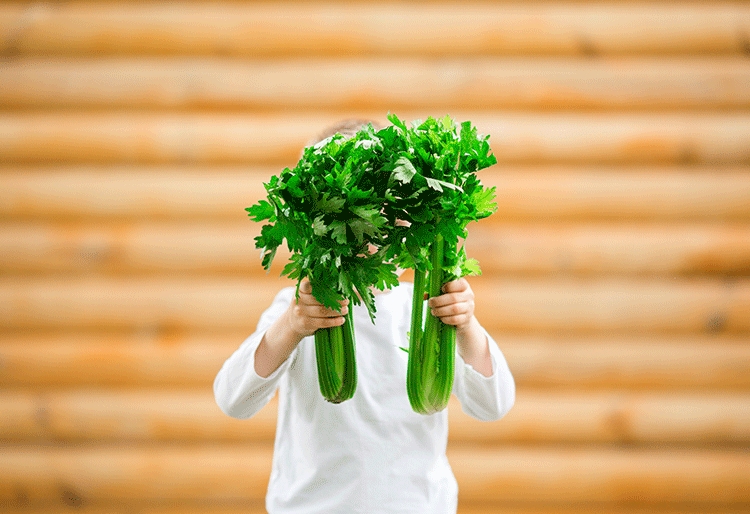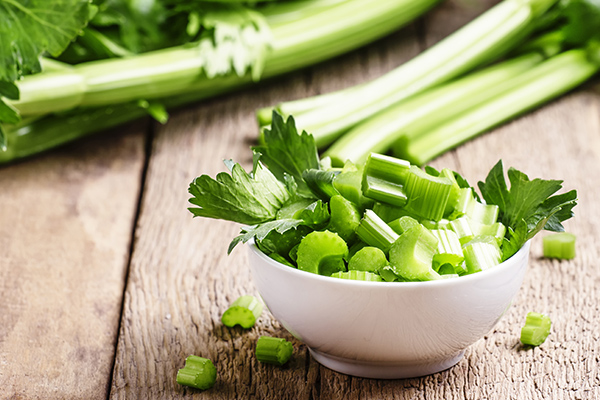The properties of celery
Full of vitamins, fiber and antioxidants, celery is a vegetable with great benefits and properties. We tell you all about this vegetable.
fresh food
Share

Celery belongs to the Umbellifer family, which is also known as the Apiaceae, and which consists of around 250 genera and over 2.500 species. This long-stemmed, fleshy and succulent vegetable can be eaten in many ways. We tell you about its origins, its beneficial properties and suggest ways to eat it and prepare it.
What is celery?
The precursor to the celery that we know today is the wild celery, a plant which has grown spontaneously for centuries in marshy areas of temperate Europe and Western Asia.
This vegetable was considered as a simple aromatic plant by the Egyptians, Greeks and Romans until the 5th century BC. The Greek physician Hippocrates extolled the virtues of its diuretic properties, and this is how its culinary and medicinal use commenced.
There are a limited number of varieties, around 15, whose main difference is based on the colour of the final product. Two large groups can be distinguished: green celery and white or yellow celery. The green varieties are characterised by being coarse, having a strong growth and being easier to cultivate, while the cultivation of the yellow varieties is more difficult, which makes them more appreciated by the large markets.
As for figures, the green celery constitutes 70 % of production, and white celery 30 %. The main Spanish export destinations are the United Kingdom and France, followed by other countries, such as Germany, Italy and Sweden.
The benefits of celery
Due to its properties, this crop is considered as more of a diet regulating and balancing food rather than for its nutritional value. This is because it consists of 92 % water and its calorie count is very low (15-20kcal). It also contributes to the normal functioning of muscles and of the nervous system.

Due to its fibre content, celery is also a regulator of intestinal transit.
As a curiosity, it is worth pointing out that celery salt can also be used as a substitute to traditional sea salt. This salt is obtained from the ground seeds and can be added to food to give it a pleasant flavour which will help you to forego the salt.
Its use in the kitchen
The good thing about this plant is that you can use its parts separately: the whole plant, the ribs and the leaves. Each of these offers a variety of possible culinary uses.
The leaves and green ribs are used in soups and condiments for various cooked dishes. Alternatively, due to their crunchy texture, the white or golden ribs are a good raw ingredient for salads. Lastly, you can use the ground seeds as a condiment, mixed with salt or as a substitute for this.
Humus with crudites
If you are a fan of this chickpea paste, a great idea is to eat it with crudites. Cut carrot, celery, peppers or your favourite vegetables into strips and enjoy a healthy and tasty aperitif.






